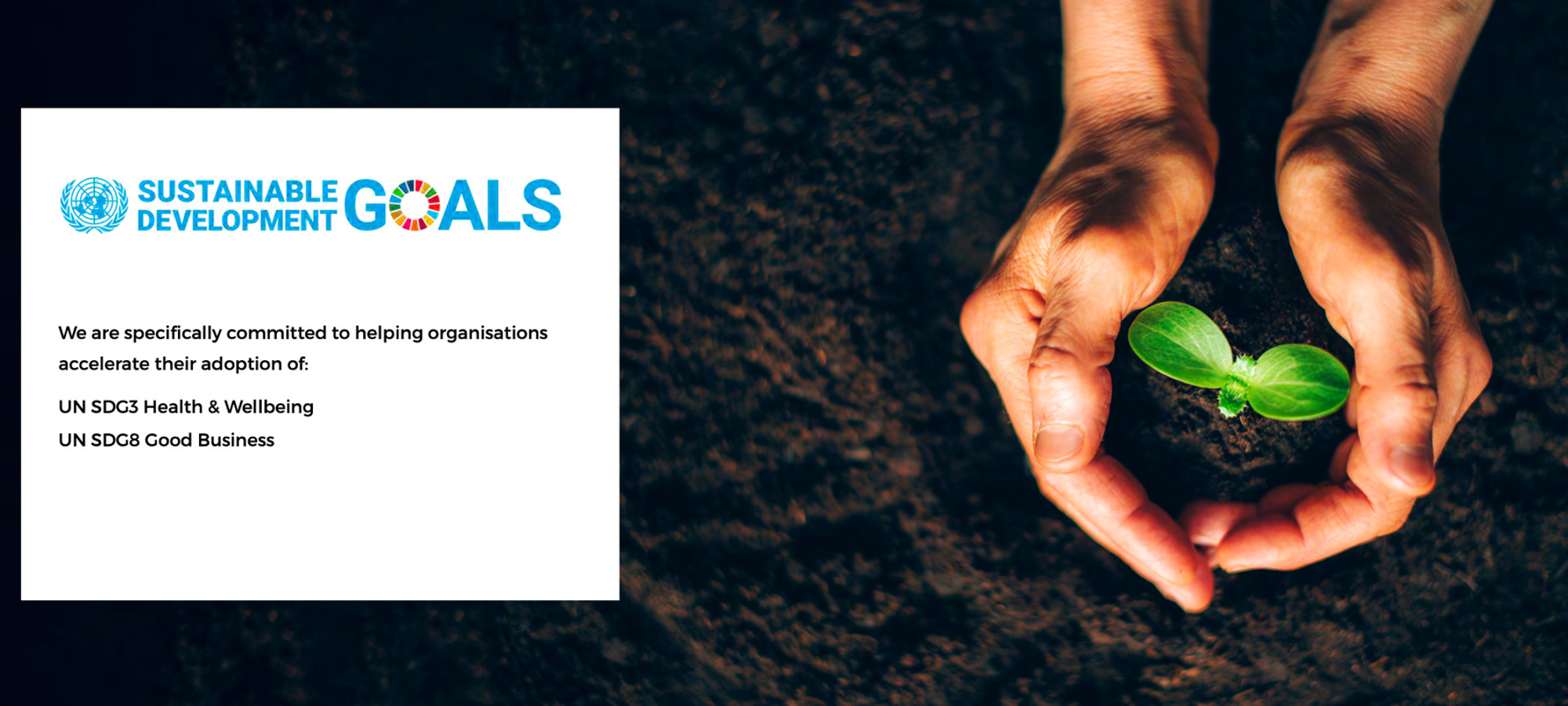What are The United Nations Sustainable Development Goals?
The United Nations Sustainable Development Goals (SDGs) have emerged as a clarion call for collective action. Adopted unanimously by all United Nations Member States in 2015, these 17 interlinked goals provide a holistic roadmap to address the world's most pressing challenges, with the aim of crafting a sustainable, equitable future for all by 2030.
From MDGs to SDGs: An Evolution of Vision
The journey towards the SDGs commenced with their predecessors, the Millennium Development Goals (MDGs), which spanned from 2000 to 2015. Although the MDGs played a pivotal role in areas such as reducing extreme poverty rates and bolstering primary education access, their scope was somewhat limited, focusing primarily on social issues in developing nations (1)
In contrast, the SDGs present a broader vision. They address economic, environmental, and social issues on a global scale, recognising the interconnected nature of these challenges. For example, while the MDGs aimed to halve extreme poverty, the SDGs ambitiously target its complete eradication. Similarly, whereas the MDGs pursued universal primary education, the SDGs aspire to inclusive and quality education at all levels.
The Interwoven Nature of the SDGs
A salient feature of the SDGs is their interconnected nature. Each goal, significant in its own right, is closely tied to others. Enhancing health (Goal 3) can lead to improved educational outcomes (Goal 4), which in turn can catalyse poverty reduction (Goal 1).
A study by Palomares et al. highlights the transformative potential of emerging technologies, such as artificial intelligence, in the context of the SDGs (2). For instance, AI-driven medical diagnostics can revolutionise healthcare in remote regions, directly influencing Goals 3 and 4. Similarly, AI in agriculture can pave the way for precision farming, contributing to Goal 2 (Zero Hunger) whilst ensuring the sustainable use of terrestrial ecosystems (Goal 15).
Stakeholders: The Pillars of SDG Realisation
Achieving the SDGs isn't a responsibility solely of governments; it requires concerted efforts from all sectors of society:
Governments: Countries, such as India, exemplify how national strategies can align seamlessly with global objectives. India's "Sabka Saath Sabka Vikas" (Collective Efforts, Inclusive Growth) reflects the ethos of the SDGs, emphasising inclusive growth and progress (3).
Private Sector: The corporate realm, endowed with vast resources and innovative capabilities, plays an instrumental role. Renewable energy firms, for instance, lead the charge towards Goal 7 (Affordable and Clean Energy). Tech companies, through sustainable digital solutions, can influence a plethora of goals, from Quality Education to Good Health (2).
Civil Society and Individuals: Grassroots movements, NGOs, and individual initiatives can drive profound change. The Smithsonian Institution's conservation efforts, for instance, align with 16 of the 17 SDGs, illustrating how focused endeavours can have wide-reaching impacts (4).
Challenges and the Path Ahead
Whilst the SDGs delineate a clear path, the journey is fraught with challenges. Economic disparities, political discord, and environmental crises can hinder progress. Yet, with international cooperation, robust policies, and innovative solutions, these obstacles can be overcome.
Addressing the positive correlation between industrialisation and energy emissions in low-income nations, as underscored by Liu's study (4), demands a nuanced, context-specific approach. It highlights the necessity of merging global guidelines with local realities, ensuring strategies are both globally informed and locally pertinent.
The Role of International Collaboration
In our increasingly globalised world, challenges aren't confined to national borders. Phenomena like climate change, pandemics, and economic downturns attest to the interconnected fabric of our global community. Consequently, the SDGs emphasise the imperative of international collaboration.
Nations can exchange best practices, technological innovations, and policy blueprints to expedite progress. For example, Scandinavian countries, celebrated for their sustainable urban planning and green technologies, can provide invaluable insights to burgeoning metropolises in Asia and Africa. Similarly, success stories from microfinance initiatives in Bangladesh or community healthcare in Rwanda can inspire and be replicated in other regions.
The Imperative of Adaptability
Although the SDGs offer a global framework, the route to their realisation will vary based on regional challenges and opportunities. The dynamic nature of the global landscape, characterised by technological breakthroughs and evolving geopolitical realities, mandates adaptability in our strategies.
For instance, the meteoric rise of digital technologies presents both challenges and opportunities. While they can be leveraged to enhance education, healthcare, and governance, there's a concurrent risk of exacerbating inequalities if not judiciously managed. An unchecked digital divide could stymie the realisation of multiple SDGs.
Engaging the Next Generation
The youth, often termed the 'SDG generation', hold a pivotal role. Their zest, innovation, and adaptability render them indispensable stakeholders in this journey. It's paramount to engage them through education, empowerment, and opportunities, for it's their future that the SDGs seek to mould.
Initiatives like the United Nations Youth Strategy, aiming to involve young individuals in the realisation of the SDGs, are commendable steps forward. The global climate strikes spearheaded by youthful activists underscore the potency and potential of youth-driven movements.
In Retrospect
As we near the SDG timeline's midpoint, reflection is crucial. While there have been advancements in domains like renewable energy adoption and gender equality, formidable challenges persist. The COVID-19 pandemic, for instance, has spotlighted the fragility of our global systems and underscored the need for resilience.
Conclusion
The SDGs, with their encompassing vision, symbolise a global consensus on charting a path to a brighter, more equitable future. As we navigate the complexities of the 21st century, these goals serve as our guiding light, steering nations, communities, and individuals towards sustainable progress. The voyage to 2030 may be arduous, but with collective endeavour, unwavering dedication, and global unity, the vision encapsulated in the SDGs is attainable.
However, challenges also unveil opportunities. The pandemic has catalysed digital transformation, proffering tools to address several SDGs. It has also rekindled the significance of global cooperation.
References
- United Nations - Millennium Development Goals (1)
- Sharma, A. (2022). A Strategic Perspective of Political Commitment to Sustainable Development in India. (3)
- Liu, Suyu. (2020). Interlinkages between Indicators of Sustainable Development Goals: Evidence from Seven Low-Income and Lower Middle-Income Countries. (4)

